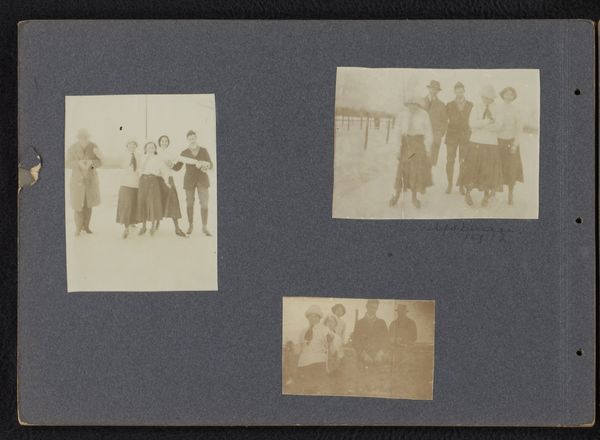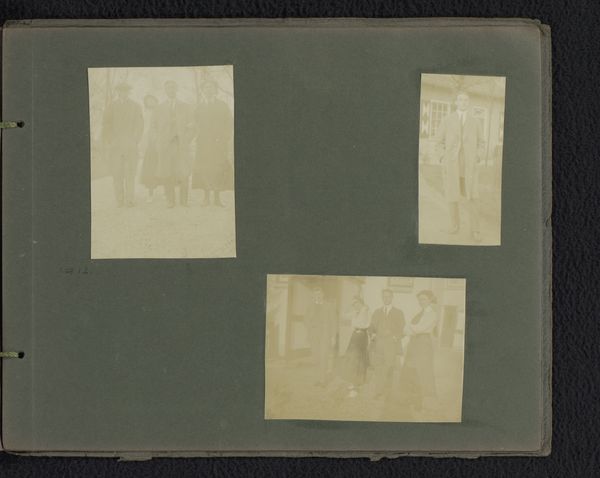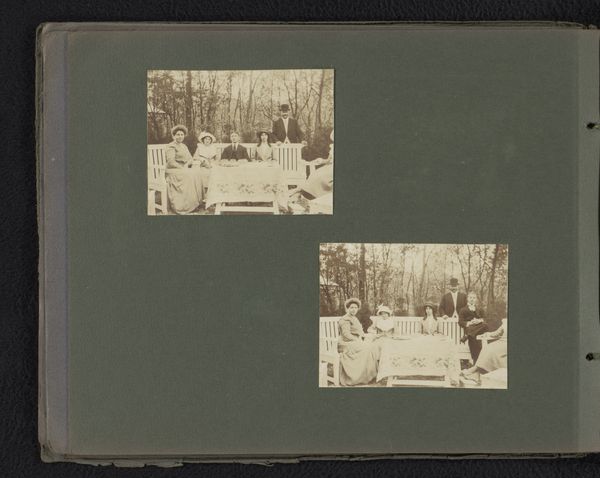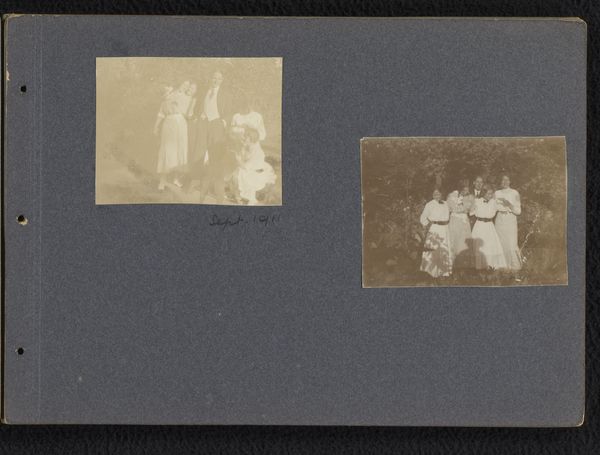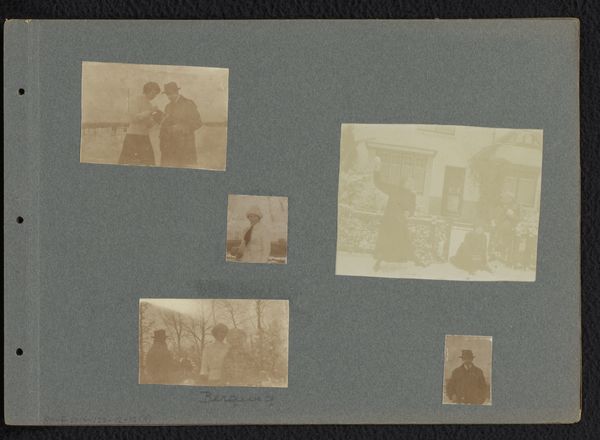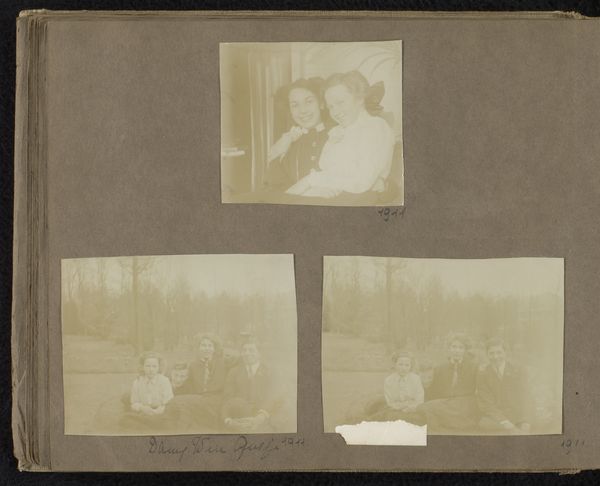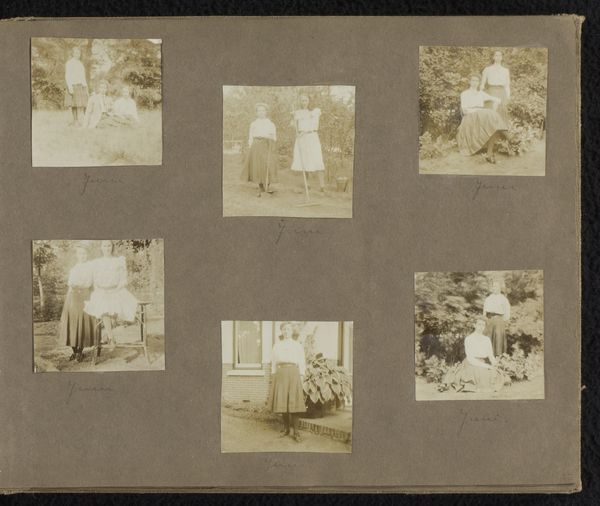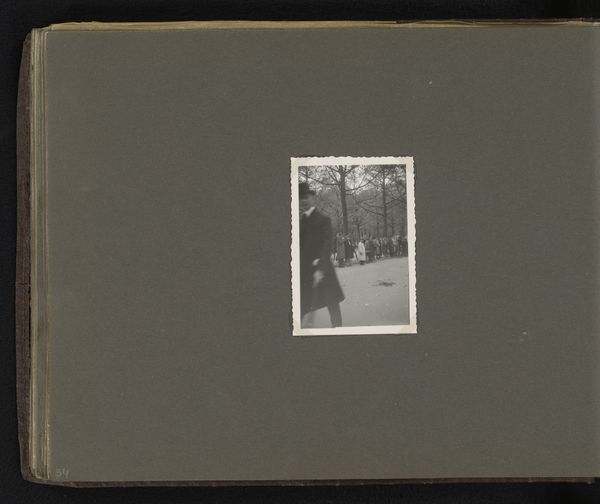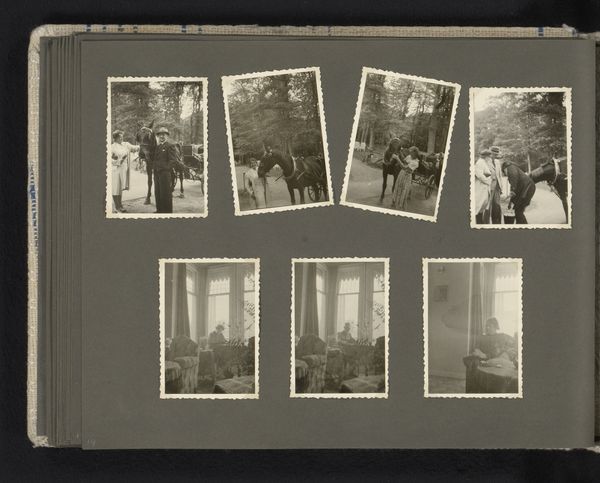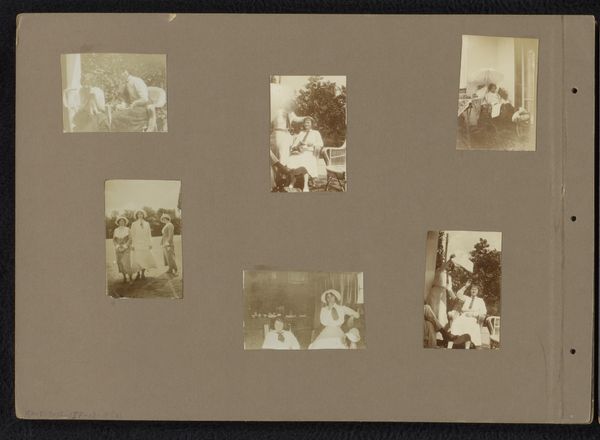
photography, albumen-print
#
portrait
#
photography
#
group-portraits
#
albumen-print
#
monochrome
Dimensions: height 240 mm, width 300 mm
Copyright: Rijks Museum: Open Domain
Editor: Here we have a family portrait titled, "Familie van Loentje Onnen rond een tafel in een tuin", which translates to "Family of Loentje Onnen around a table in a garden". It's an albumen print from 1912, rendered in monochrome. There is a formal air to it. What strikes you most about this piece? Curator: What jumps out at me is the carefully constructed nature of the scene. It speaks volumes about the social dynamics of the time. We have this family, seemingly captured in a candid moment in their garden. But consider: Who is missing from the frame? Who held the economic power here? How did the societal roles constrain the women in this photo versus the men? Editor: So, you see more than just a simple family photo? Curator: Absolutely. The setting is controlled, almost staged. Look at their attire; their posture. Every detail points towards a rigid social hierarchy. The monochrome enhances the timelessness but also serves to obscure the nuances of their individual stories. It invites us to question what isn't being said, whose narratives are marginalized in this visual representation of familial bliss. What does domestic space mean for them in 1912? Editor: It’s fascinating to think about all the untold stories within this single image, challenging this representation of domesticity! I never would have considered those viewpoints on my own. Curator: Precisely! Art isn't just about aesthetics; it’s a lens through which we can examine the complexities of identity, power, and historical context. A powerful medium, when read correctly. Editor: This has opened up so many new perspectives for me. I'll definitely approach older photographs with a different mindset now. Curator: And hopefully, it'll inspire you to look for those missing voices in contemporary works, too!
Comments
No comments
Be the first to comment and join the conversation on the ultimate creative platform.

